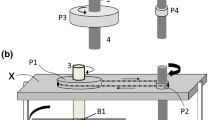Abstract
The principal task of the engine is to convert chemical energy into kinetic energy and then replace the various losses. So a car, which exists primarily to provide personal mobility, can be regarded technically as a kinetic energy system, above all else. This examination by Hy Kinesys and the City University of London (UK) identifies a more efficient way to provide regenerative braking and finds a more cost-effective way to provide acceleration without requiring the engine to provide most of the accelerative power.
Similar content being viewed by others
References
Ellis, C.W.H.: The Future of F1 Engines. In: Racecar Engineering magazine, May 2007
Patent number: GB2405129 Kinetic Energy Storage System
Author information
Authors and Affiliations
Rights and permissions
About this article
Cite this article
Pullen, K., Ellis, C. The vehicle as kinetic energy system. ATZ Autotechnol 8, 54–57 (2008). https://doi.org/10.1007/BF03247092
Issue Date:
DOI: https://doi.org/10.1007/BF03247092




